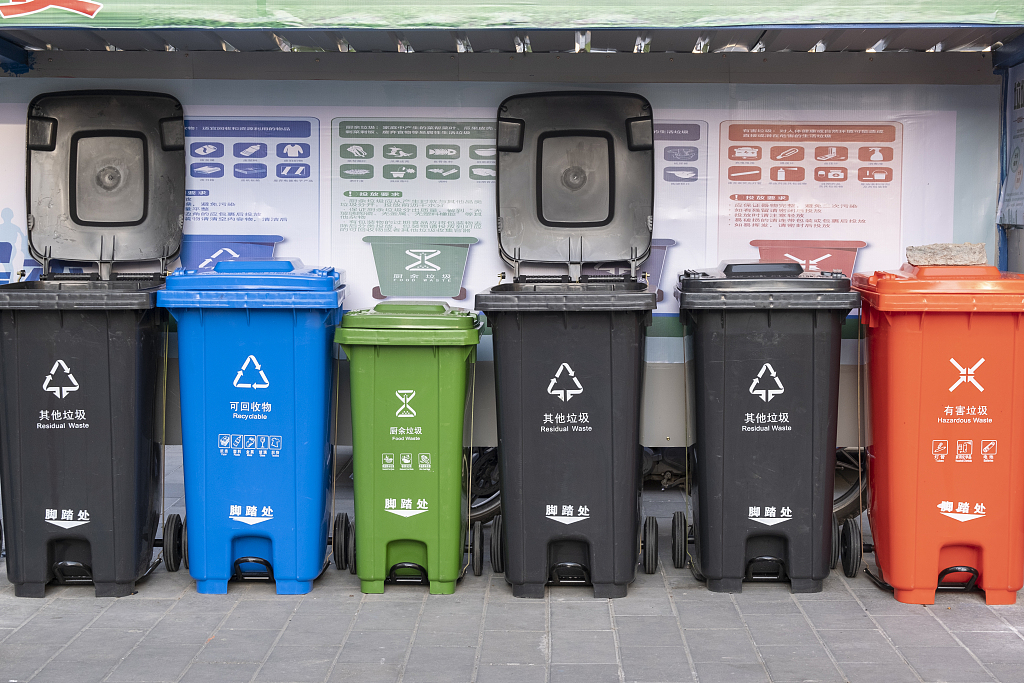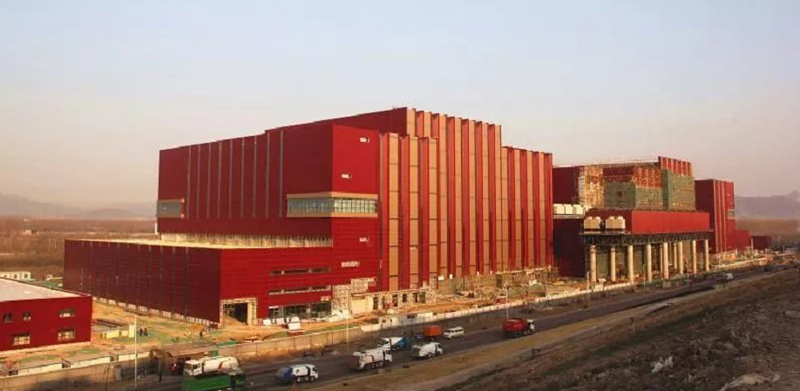
A garbage sorting station in Beijing, China, June 12, 2020. /VCG
A garbage sorting station in Beijing, China, June 12, 2020. /VCG
A year after the implementation of compulsory garbage sorting in Beijing, the household waste of China's capital city has been reduced significantly. However, residents and communities living in this metropolitan city are still trying to acclimatize to the new recycling system.
Beijing started to implement the newly revised city-wide household waste regulation on May 1, 2020. According to the regulation, the over 21 million residents in this mega city will need to classify their domestic waste into four categories: kitchen, recyclable, hazardous, and other waste.
The introduction of the regulation is part of a nationwide campaign aimed at addressing the rising mountains of domestic waste produced by Chinese metropolises.
According to Beijing's urban management commission, the largest city in China by area produced more than 7.9 million tons of household trash from January to October.
After the implementation of the regulation, the daily average domestic waste collected in Beijing was 22,000 tons in 2020, a decrease of 20.42 percent from 27,700 tons in 2019.
In the first four months of 2021, the average daily volume was 20,600 tons, a further decrease of 6.36 percent from 2020 and a decrease of 25.6 percent from 2019, with a daily reduction of more than 7,100 tons.
The reduction is almost equivalent to the capacity of two A'suwei incineration plants in Beijing with a daily processing capacity of 3,000 tons. This means savings of at least 20 billion yuan of fixed investment from land requisition and construction of the plant.
Last month, household food waste separation was 3,878 tons per day – 11.6 times higher compared to the same time before regulations were imposed. The separation rate increased from 1.41 percent before the regulation and stabilized at about 20 percent.
The amount of recyclables separated by catering industry was 4,382 tons per day, an increase of 46.1 percent compared to before.
The overall recycling rate of household garbage reached 37.5 percent.

A'suwei incineration plants in Beijing. /A'suwei
A'suwei incineration plants in Beijing. /A'suwei
Zhang Yan, deputy director of the Beijing Municipal Management Commission of Urban Management, said in the past year, a system of holding, collecting, transporting, and processing facilities to meet the needs of classification of domestic waste has been fundamentally established.
So far, 1,275 classified stations have been built, and 63,200 fixed barrel stations have been upgraded to meet the standards. 3,945 garbage transportation vehicles, and 805 closed cleaning stations have been upgraded, Zhang said at the press conference marking the one-year implementation of the regulation.
However, there are still challenges ahead for the full implementation of the garbage sorting system in Beijing, as it will require an overhaul in the habits of millions of households and the operations of businesses and government departments.
Some problems include the lack of standardization of classification facilities, low level of construction and management of classification posts, and lack of temporary storage places for bulky and construction garbage.
Zhang also pointed out that there is still great potential to reduce waste from being produced, like decreasing food waste, the use of take-out lunch boxes and general packaging.
In the future, the government and community units will look to further improve services to better respond to citizen's complains on waste removal and transportation, daily maintenance of garbage stations, and the random stacking of large and construction waste.

